Scandinavian design is a masterclass in balancing simplicity, functionality, and beauty. When applied to dining areas, it creates a space that’s not only inviting but also calming and practical. By using subtle colors, clean lines, and natural materials, a Scandinavian dining area can become the perfect spot for everything from cozy family dinners to casual gatherings with friends. The softness of the palette combined with carefully chosen textures transforms an ordinary dining area into a serene retreat that feels effortless yet intentional.
My journey into creating a soft Scandinavian dining area started with a love for neutral tones and natural elements. I wanted a dining space that felt calm and cohesive without being overly minimalistic. Inspired by Nordic interiors, I incorporated soft greys, muted pastels, and light woods into the design. With the addition of linen placemats, ceramic dishware, and a pendant light with a frosted finish, the space truly came to life. It became a place where meals felt more intimate and the atmosphere was always inviting, regardless of the occasion.
If you’re dreaming of a dining area that’s as functional as it is beautiful, embracing Scandinavian design with a palette of subtle colors is the way to go. Let’s explore how to create a soft Scandinavian dining area that embodies elegance, warmth, and simplicity.
The Perfect Design for You
A soft Scandinavian dining area is ideal for anyone who loves clean, clutter-free spaces but wants to avoid the starkness often associated with minimalism. It’s perfect for families, couples, or individuals who value comfort, timeless design, and the ability to adapt the space for different occasions.
Imagine a dining area with light oak furniture, muted grey walls, and a soft beige rug anchoring the space. The table is set with linen napkins in a delicate sage green and simple white ceramic plates. Above, a pendant light with a matte finish casts a warm glow, while greenery in a terracotta vase adds a natural touch. This design feels light, airy, and endlessly versatile—perfect for both weekday dinners and weekend brunches.
Picture Gallery
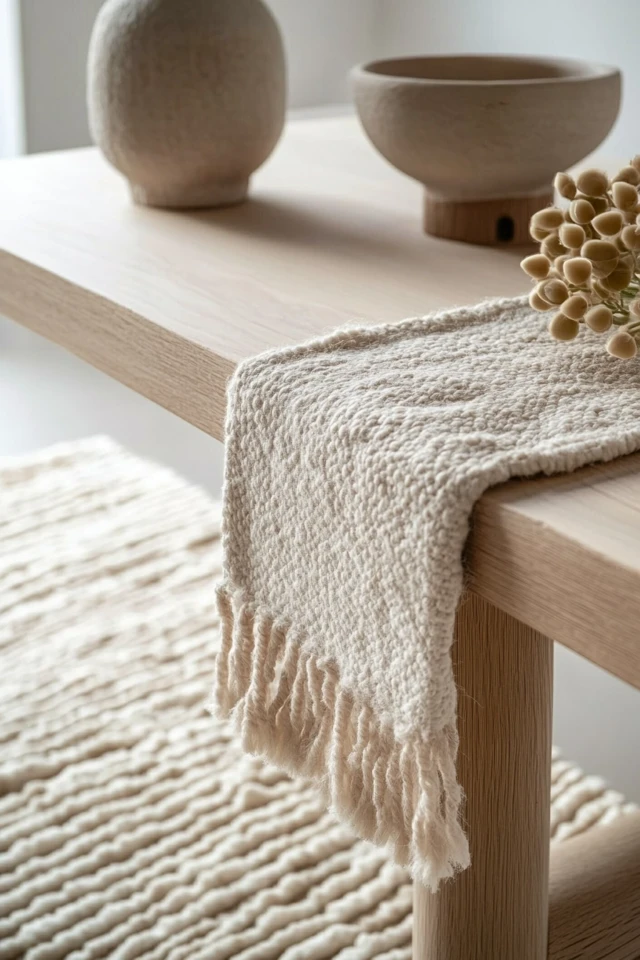
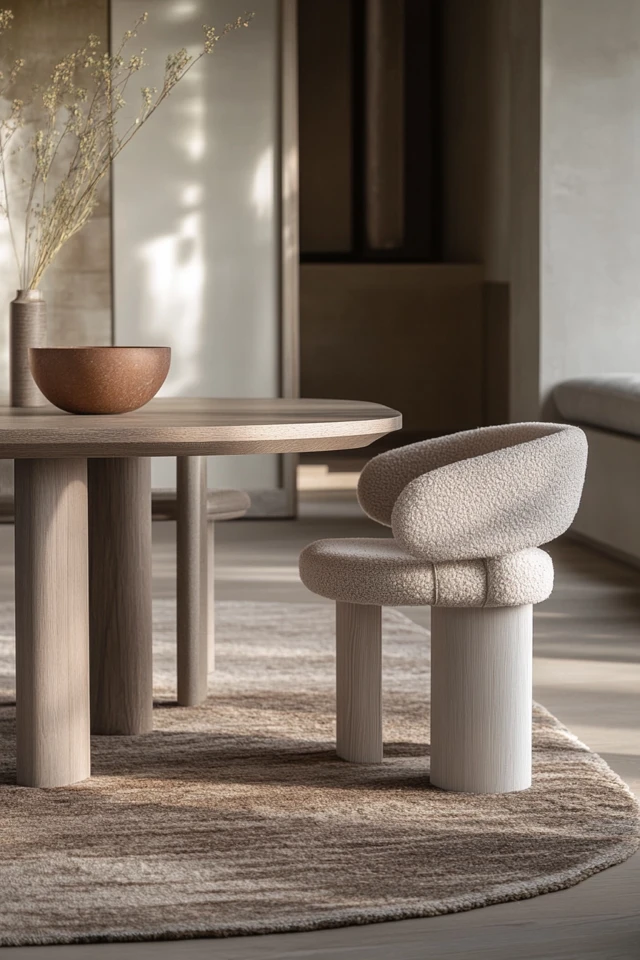
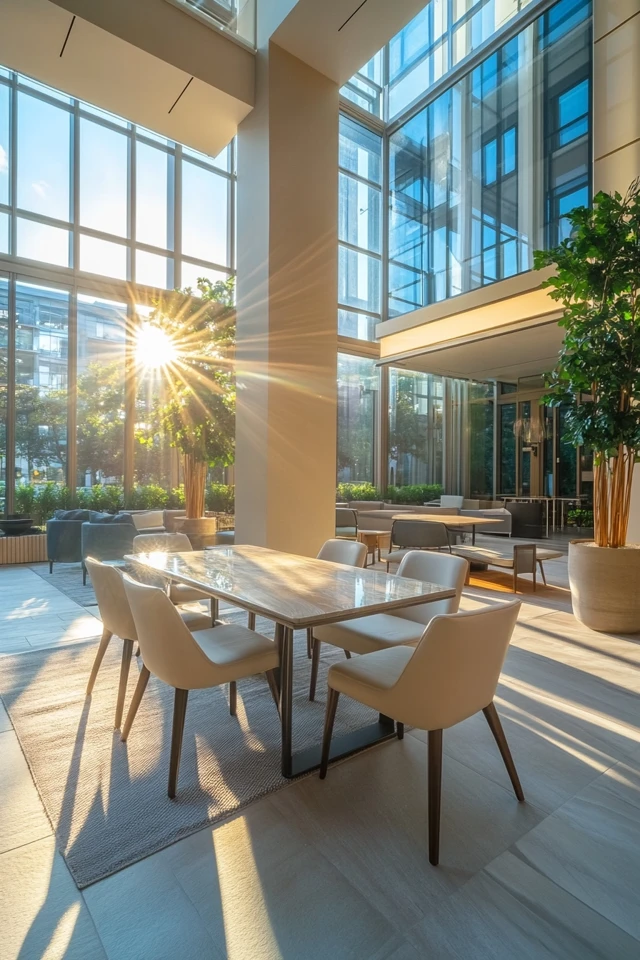
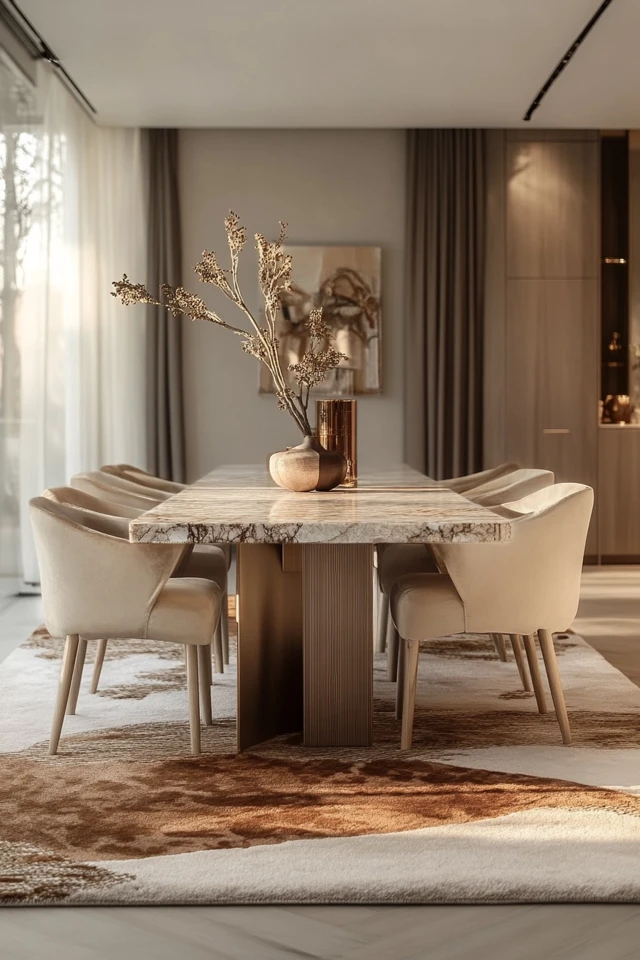
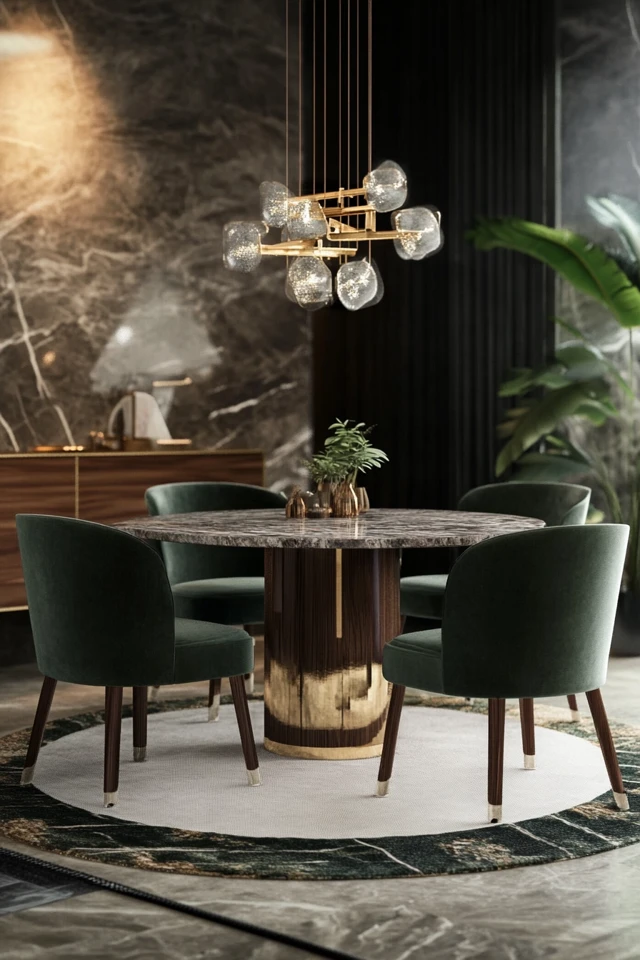
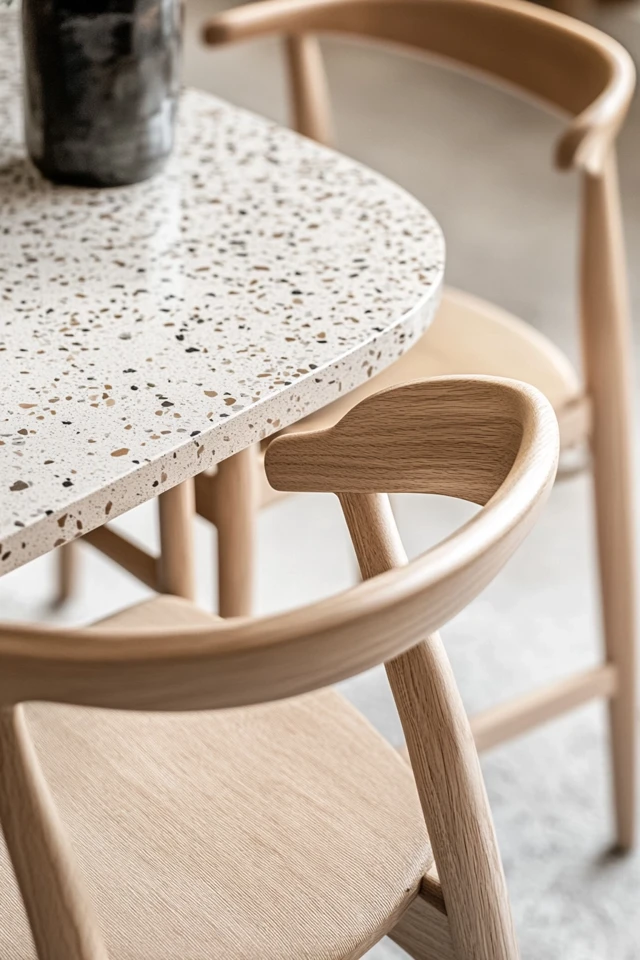
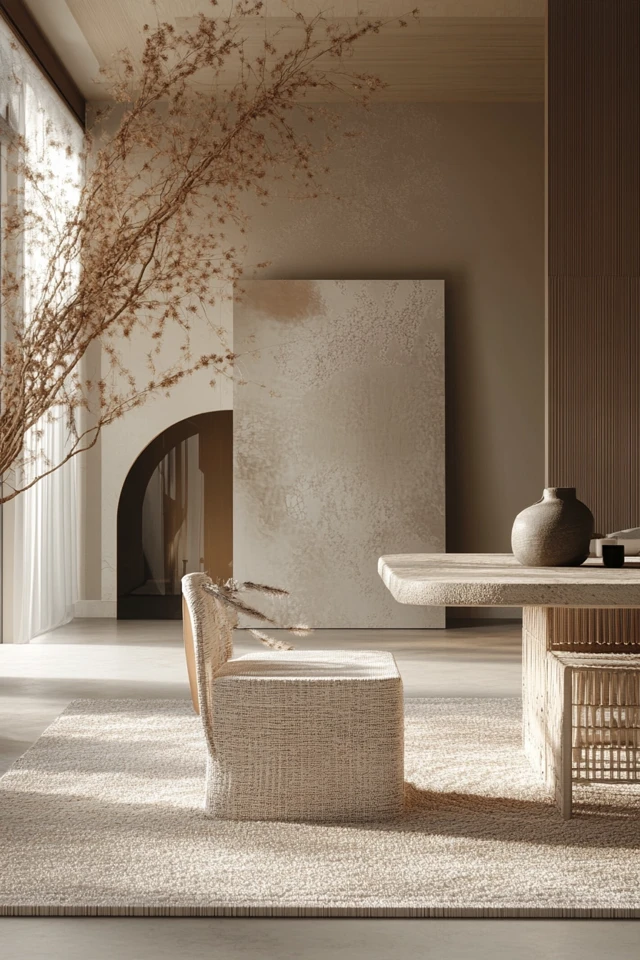
Why Subtle Colors Work So Well in Scandinavian Dining Areas
Subtle colors are a cornerstone of Scandinavian design, creating spaces that are serene, cohesive, and welcoming. Here’s why they’re so effective:
Key Elements:
- Neutral Base: Whites, greys, and beiges provide a calm foundation that allows other design elements to shine.
- Muted Accents: Colors like soft sage, dusty pink, and pale blue add depth and personality without overwhelming the space.
- Natural Materials: The warmth of wood and the texture of natural fibers complement the softness of the color palette.
- Timeless Appeal: Subtle colors are versatile and timeless, ensuring your dining area remains stylish for years.
- Enhanced Light Reflection: Soft tones maximize natural light, making the space feel open and airy—a hallmark of Scandinavian interiors.
Evidence-based design suggests that neutral and muted colors can reduce stress and promote relaxation, making them ideal for dining areas where people gather to connect and unwind.
How to Create a Soft Scandinavian Dining Area With Subtle Colors
1. Start With a Light, Neutral Base
- Why It Works: A neutral foundation sets the tone for a calm and cohesive dining area.
- How to Do It:
- Paint walls in soft shades of white, light grey, or beige to create an open, airy feel.
- Use light wood or natural stone flooring to add warmth and texture.
2. Choose a Minimalist Dining Table
- Why It Works: Clean-lined tables are the centerpiece of Scandinavian dining areas, combining functionality and style.
- How to Do It:
- Opt for a light wood table in oak or birch for a classic Nordic look.
- Choose a round or rectangular shape based on your space and needs.
3. Add Comfortable, Stylish Chairs
- Why It Works: Scandinavian design prioritizes comfort without compromising on aesthetics.
- How to Do It:
- Pair your table with upholstered chairs in muted colors like grey or beige.
- Alternatively, use wooden chairs with a curved design for added softness.
4. Use Muted Pastels for Accents
- Why It Works: Soft pastel tones add personality while maintaining the subtlety of the design.
- How to Do It:
- Incorporate cushions, placemats, or napkins in colors like sage green, dusty pink, or pale blue.
- Keep these accents consistent to ensure the space feels cohesive.
5. Layer Natural Textures
- Why It Works: Natural textures add warmth and dimension, softening the overall look.
- How to Do It:
- Use linen or cotton tablecloths and napkins for a relaxed, lived-in feel.
- Add a jute or wool rug under the table to anchor the space.
6. Incorporate Soft Lighting
- Why It Works: Proper lighting enhances the ambiance and highlights the softness of the colors.
- How to Do It:
- Install a pendant light with a matte or frosted finish above the table for diffused light.
- Use warm LED bulbs to create a cozy, inviting atmosphere.
7. Keep Decor Minimal and Intentional
- Why It Works: A clutter-free approach ensures the space feels open and serene.
- How to Do It:
- Decorate with a single vase of fresh or dried flowers in muted tones.
- Use simple ceramic or glassware to enhance the minimalist aesthetic.
8. Add a Touch of Greenery
- Why It Works: Plants bring life and vibrancy to a neutral dining area.
- How to Do It:
- Place a potted plant or a vase of eucalyptus on the table.
- Use greenery sparingly to maintain the clean, minimalist look.
9. Mix Soft Finishes and Materials
- Why It Works: Combining matte finishes with natural wood creates a balance between modernity and warmth.
- How to Do It:
- Use matte ceramic dishware alongside wooden serving boards or trays.
- Incorporate a mix of smooth and textured surfaces to keep the space dynamic.
10. Create a Flexible Layout
- Why It Works: Scandinavian dining areas are often multi-functional, designed to adapt to different needs.
- How to Do It:
- Choose extendable dining tables for hosting guests.
- Use stackable chairs or benches to save space when not in use.
FAQ Section
1. What colors work best for a soft Scandinavian dining area?
- Stick to a neutral base of whites, greys, and beiges, and add accents in muted pastels like sage green, dusty pink, or pale blue.
2. How do I make a Scandinavian dining area feel cozy?
- Layer natural textures like linen, wool, and jute. Use warm lighting and soft accents like cushions and throws.
3. What materials are common in Scandinavian dining furniture?
- Light woods like oak, birch, and pine are staples, often paired with natural fabrics and matte finishes.
4. Can I use bold colors in a Scandinavian dining area?
- Bold colors should be used sparingly, such as in artwork or a single accent piece, to maintain the soft, subtle aesthetic.
5. How do I style a small Scandinavian dining area?
- Use space-saving furniture like round tables or benches. Keep the color palette light and neutral to make the area feel larger.
Variations
Minimalist Scandinavian Dining Area
- Focus on a monochrome palette with simple, clean-lined furniture for an ultra-modern look.
Rustic Scandinavian Dining Area
- Add reclaimed wood furniture, woven textures, and earthy tones for a cozy, rustic vibe.
Contemporary Scandinavian Dining Area
- Incorporate bold geometric patterns or metallic accents while keeping the overall look subtle and cohesive.
How to Showcase It
Seasonal Changes
- Update your dining area with seasonal accents, such as fresh flowers in spring or warm-toned candles in autumn.
Holiday Gatherings
- Use muted metallic accents, like gold or brass candlesticks, to elevate the space for festive occasions.
Everyday Serenity
- Keep the space clean and clutter-free, with simple decor and soft textures for a calming atmosphere.
Post-Renovation Reveal
- Highlight your redesigned dining area with before-and-after photos that showcase its transformation.
Occasions to Feature It
- Family Dinners: Create a cozy and inviting space for everyday meals.
- Brunch With Friends: Use soft pastel accents to add charm to casual gatherings.
- Romantic Evenings: Add candles and greenery for an intimate, hygge-inspired dining experience.
Conclusion
A soft Scandinavian dining area with subtle colors offers the perfect blend of elegance, comfort, and functionality. By combining muted tones, natural materials, and thoughtful design, you can create a space that’s as calming as it is beautiful.
Start experimenting with these ideas and watch your dining area transform into a serene retreat. Whether it’s for family dinners, casual gatherings, or quiet mornings with a cup of coffee, a Scandinavian-inspired dining area is sure to become one of your favorite spaces in your home.


